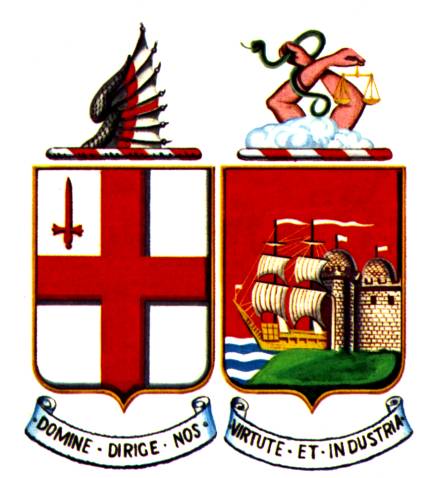
ll lines had their characteristics and idiosyncrasies. The Great Western, even up to nationalization, was always rather superior in its attitude, and let you know it, although third-class passengers were latterly no longer regarded with distaste. Even a train running late always managed to look as if, by some chance, it was meant to be late. The Great Eastern excelled in its dining-car arrangements, a point admitted also about the Midland by those who otherwise made derogatory remarks about it.



The Railway emblems (from left to right): (a) The Great Western Railway, (b) The London & South Western Railway, and (c) The North Eastern Railway. [Click on these images to enlarge them.]
The London & South Western called itself the Royal Road, and the London & North Western considered it was the Premier Line, an opinion not shared by all its customers, but it was good on punctuality. The South Eastern had a reputation (not entirely deserved) for never running anything at all on time, together with trains of so many different shapes and sizes of rolling stock that -- they looked rather like the battlements of a castle. The same thing applied to the tough Highland Railway -- it had to be tough in view of the weather conditions it sometimes faced; but their late running was always the fault of the connexions with the lines from the south wheret in fact, most of the rolling stock came from. The wellknown occasion, August 7th, 1888, when the Inverness train left Perth with 37 carriages belonging to ten different companies, was not uncommon at that time of the year. The Great Central was a branch of the Manchester, Sheffield & Lincolnshire Railway. The North Eastern branch lines were known for the paucity of their passenger trains. But they were all real railways with real steam locomotives, and all photogenic. Each company had, and still has, its admirers, even those companies that might be described loosely as the comic turns. [no pagination]
Bibliography
Spence, Jeoffry. Victorian and Edwardian Railways from Old Photographs. London: B.T. Batsford, 1975.
Last modified 27 June 2003